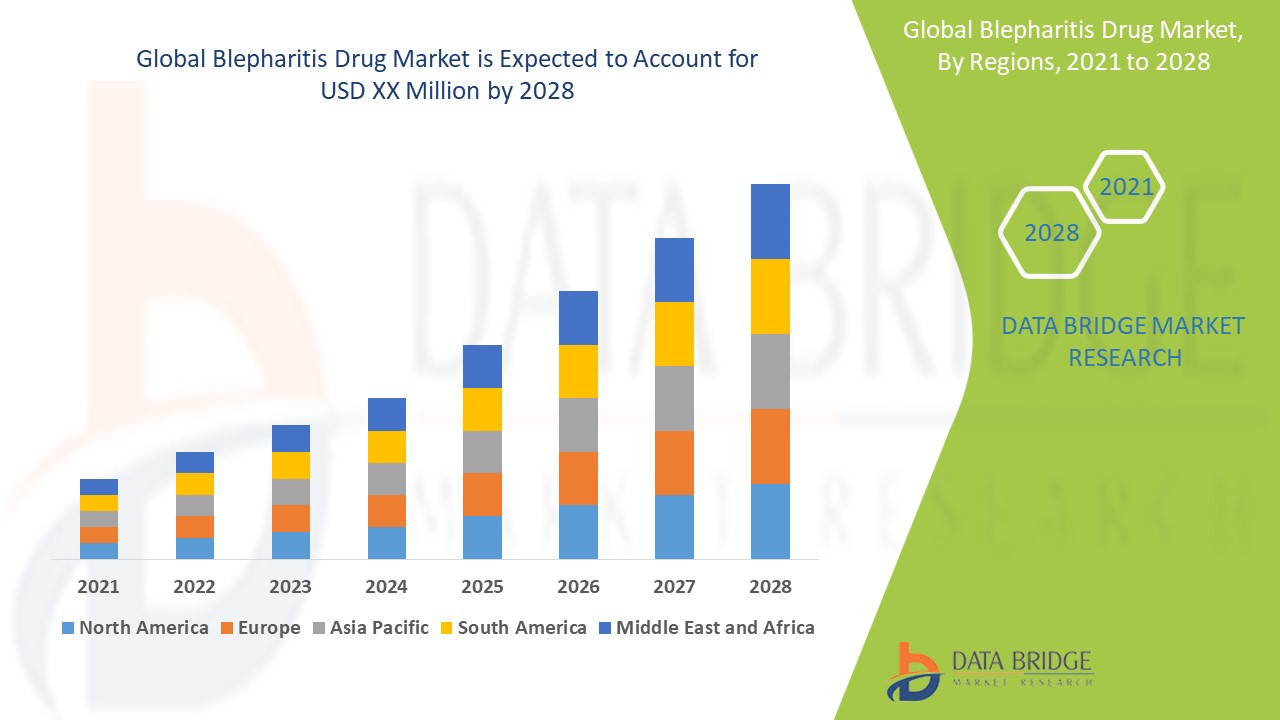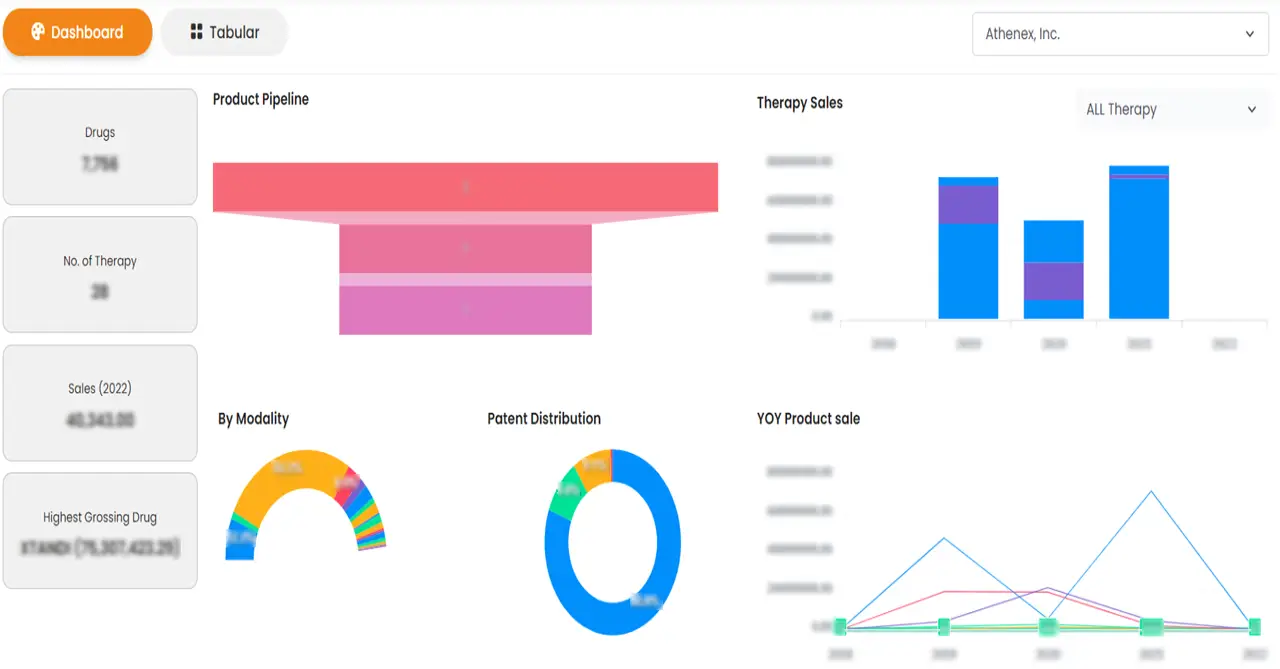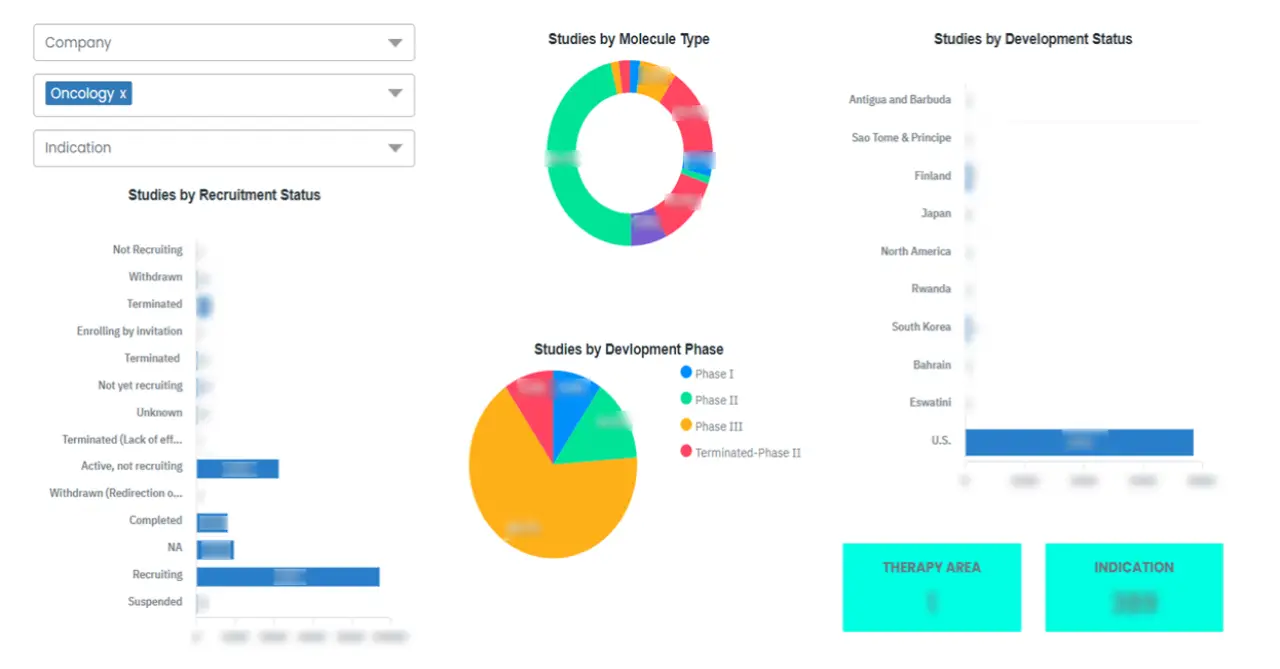Global Blepharitis Drug Market
Market Size in USD Billion
CAGR :
% 
 USD
1.16 Billion
USD
1.71 Billion
2024
2032
USD
1.16 Billion
USD
1.71 Billion
2024
2032
| 2025 –2032 | |
| USD 1.16 Billion | |
| USD 1.71 Billion | |
|
|
|
Global Blepharitis Drug Market Segmentation, By Type (Anterior Blepharitis and Posterior Blepharitis), Treatment Type (Warm Compresses or Eyelid Scrubs, Mechanical Glandular Eyelid Massage, Artificial Lubricants, Topical AntibioticsTopical Corticosteroids, Combination Topical Corticosteroids and Antibiotic, Meibomian Gland Expression, Oral Antibiotics and Dietary Supplements), Dosage Form Type (Tablets, Solution, Suspension, Ointment, and Others), Route of Administration (Oral, Topical, and Others), End Users (Hospitals, Homecare, Specialty Clinics, and Others)– Industry Trends and Forecast to 2032
Blepharitis Drug Market Analysis
The blepharitis drug market is experiencing steady growth due to the increasing prevalence of this eye condition, which causes inflammation of the eyelids. This condition affects a large portion of the population worldwide, particularly among individuals with dry eye disease or other ocular conditions. The market is driven by the rising demand for effective treatments that address the symptoms of blepharitis, such as itching, redness, and irritation. Recent developments in the market have led to the introduction of new therapies, including anti-inflammatory drugs, antibiotic ointments, and novel topical treatments that target the root causes of blepharitis, such as bacterial infections and gland dysfunction. In addition, advancements in drug delivery systems, including eye drops and ointments, have improved patient compliance and treatment outcomes. The growing awareness of eye health and advancements in research are expected to continue to propel the market's growth over the coming years.
Blepharitis Drug Market Size
The global blepharitis drug market size was valued at USD 1.16 billion in 2024 and is projected to reach USD 1.71 billion by 2032, with a CAGR of 5.00% during the forecast period of 2025 to 2032. In addition to the insights on market scenarios such as market value, growth rate, segmentation, geographical coverage, and major players, the market reports curated by the Data Bridge Market Research also include depth expert analysis, patient epidemiology, pipeline analysis, pricing analysis, and regulatory framework.
Blepharitis Drug Market Trends
“Demand for Effective Treatments”
The blepharitis drug market is evolving with a growing focus on innovative treatments aimed at improving patient outcomes. As awareness of eye health increases, the demand for effective treatments for blepharitis has grown. One significant trend in the market is the shift towards novel anti-inflammatory therapies and antibiotic combinations, which address the root causes of blepharitis, such as bacterial infections and gland dysfunction. Innovations in drug delivery systems, such as preservative-free eye drops and improved ointments, are enhancing patient experience and compliance. In addition, the development of personalized treatments based on patient-specific factors, such as the severity of symptoms, is gaining traction. These advancements are expected to fuel the market's growth, offering more effective solutions for those suffering from blepharitis.
Report Scope and Blepharitis Drug Market Segmentation
|
Attributes |
Blepharitis Drug Key Market Insights |
|
Segments Covered |
|
|
Countries Covered |
U.S., Canada and Mexico in North America, Germany, France, U.K., Netherlands, Switzerland, Belgium, Russia, Italy, Spain, Turkey, Rest of Europe in Europe, China, Japan, India, South Korea, Singapore, Malaysia, Australia, Thailand, Indonesia, Philippines, Rest of Asia-Pacific (APAC) in the Asia-Pacific (APAC), Saudi Arabia, U.A.E., South Africa, Egypt, Israel, Rest of Middle East and Africa (MEA) as a part of Middle East and Africa (MEA), Brazil, Argentina and Rest of South America as part of South America. |
|
Key Market Players |
F. Hoffmann-La Roche Ltd (Switzerland), Novartis AG (Switzerland), Astrazeneca (U.K.), Pfizer Inc. (U.S.), Sanofi (France), Johnson & Johnson Services, Inc. (U.S.), AbbVie Inc. (U.S.), Allergan (Ireland), Merck & Co., Inc. (U.S.), Amgen Inc. (U.S.), DAIICHI SANKYO COMPANY, LIMITED. (Japan), Sun Pharmaceutical Industries Ltd. (India), Teva Pharmaceutical Industries Ltd. (Israel), Takeda Pharmaceutical Company Limited. (Japan), GSK plc (U.K.), Cardinal Health (U.S.), Viatris Inc. (U.S.), Boehringer Ingelheim International GmbH (Germany), Regeneron Pharmaceuticals Inc. (U.S.), Bristol-Myers Squibb Company (U.S.) |
|
Market Opportunities |
|
|
Value Added Data Infosets |
In addition to the insights on market scenarios such as market value, growth rate, segmentation, geographical coverage, and major players, the market reports curated by the Data Bridge Market Research also include depth expert analysis, patient epidemiology, pipeline analysis, pricing analysis, and regulatory framework. |
Blepharitis Drug Market Definition
Blepharitis drugs are medications used to treat blepharitis, an eye condition characterized by inflammation of the eyelid margins. These drugs aim to alleviate symptoms such as redness, itching, swelling, and irritation. Treatment options typically include antibiotics to address bacterial infections, anti-inflammatory drugs to reduce swelling, and lubricants to relieve dryness. In some cases, combination therapies may be used to treat both the symptoms and underlying causes, such as meibomian gland dysfunction or bacterial overgrowth. These drugs come in various forms, including eye drops, ointments, and oral medications, designed to improve the health of the eyelids and manage chronic symptoms.
Blepharitis Drug Market Dynamics
Drivers
- Increasing Prevalence of Blepharitis
The increasing number of individuals affected by blepharitis, particularly those with underlying conditions such as dry eye disease, is significantly driving the demand for effective treatments. As dry eye disease often coexists with blepharitis, it exacerbates symptoms such as irritation, redness, and swelling, prompting patients to seek more comprehensive solutions. This growing prevalence of blepharitis, especially among older populations and individuals with other ocular conditions, has created a larger patient base for targeted therapies. Consequently, pharmaceutical companies are focusing on developing advanced treatments to address these issues, which is propelling the overall growth of the blepharitis drug market.
- Improved Drug Delivery Systems
The development of patient-friendly delivery methods, including preservative-free eye drops and ointments, is significantly improving patient compliance and contributing to the growth of the blepharitis drug market. Traditional eye medications often contain preservatives that can irritate the eyes, particularly in individuals with sensitive conditions such as blepharitis. By offering preservative-free alternatives, pharmaceutical companies are ensuring that patients experience less discomfort and can adhere to treatment regimens more effectively. These innovations enhance the overall treatment experience and expand the market by attracting more patients seeking easier-to-use, less irritating solutions for managing their condition.
Opportunities
- Rise of Telemedicine and Remote Monitoring Tools
The rise of telemedicine and remote monitoring tools presents a significant opportunity for the blepharitis drug market. By integrating treatment options with digital platforms, patients can now manage chronic conditions such as blepharitis more effectively from the comfort of their homes. These platforms enable personalized care, allowing healthcare providers to monitor progress and adjust treatment regimens as needed. As telemedicine becomes increasingly popular for managing eye conditions, the demand for accessible, remote treatment options is expected to grow. This shift towards digital healthcare solutions creates new opportunities for pharmaceutical companies to develop and promote innovative treatments for blepharitis.
- Development of Combination Therapies
The development of combination therapies that address both bacterial infection and inflammation in a single treatment presents a significant opportunity for the blepharitis drug market. These therapies can offer enhanced efficacy by targeting the underlying causes of blepharitis simultaneously, which reduces the need for multiple medications and simplifies treatment regimens for patients. By combining antibiotics and anti-inflammatory agents, such therapies improve patient outcomes and boost treatment adherence. This innovative approach can drive market growth, as patients and healthcare providers seek more efficient and convenient options to manage blepharitis effectively, creating an opportunity for pharmaceutical companies to meet these needs.
Restraints/Challenges
- Side Effects and Patient Compliance
Some treatments for blepharitis, such as antibiotics and steroids, can cause side effects that may reduce patient compliance. These side effects, which may include irritation, dryness, or even worsening of symptoms, can discourage patients from continuing their prescribed regimen. Non-compliance or discontinuation of treatment leads to suboptimal management of the condition, affecting its long-term control and increasing the risk of recurrence. This presents a significant challenge for the blepharitis drug market, as maintaining patient adherence is crucial for the success of treatments. Pharmaceutical companies must address this challenge by developing therapies with fewer side effects to improve patient outcomes and drive market growth.
- High Treatment Costs
The cost of long-term management of blepharitis, particularly for patients requiring multiple therapies, presents a significant restraint in the market. Managing blepharitis often involves a combination of treatments, such as antibiotics, anti-inflammatory drugs, and lubricants, which can add up over time. For patients in price-sensitive markets, the cumulative cost of these therapies may be prohibitive, limiting access to necessary treatments. In addition, ongoing care is often required to manage the chronic nature of the condition, further escalating expenses. As a result, affordability becomes a key barrier to widespread adoption of effective blepharitis treatments, restricting market growth in these regions.
This market report provides details of new recent developments, trade regulations, import-export analysis, production analysis, value chain optimization, market share, impact of domestic and localized market players, analyses opportunities in terms of emerging revenue pockets, changes in market regulations, strategic market growth analysis, market size, category market growths, application niches and dominance, product approvals, product launches, geographic expansions, technological innovations in the market. To gain more info on the market contact Data Bridge Market Research for an Analyst Brief, our team will help you take an informed market decision to achieve market growth.
Blepharitis Drug Market Scope
The market is segmented on the basis of type, treatment type, dosage form type, route of administration, and end users. The growth amongst these segments will help you analyse meagre growth segments in the industries and provide the users with a valuable market overview and market insights to help them make strategic decisions for identifying core market applications.
Type
- Anterior Blepharitis
- Posterior Blepharitis
Treatment Type
- Warm Compresses or Eyelid Scrubs
- Mechanical Glandular Eyelid Massage
- Artificial Lubricants
- Topical Antibiotics
- Topical Corticosteroids
- Combination Topical Corticosteroids and Antibiotic
- Meibomian Gland Expression
- Oral Antibiotics and Dietary Supplements
Dosage Form Type
- Tablets
- Solution
- Suspension
- Ointment
- Others
Route of Administration
- Oral
- Topical
- Others
End Users
- Hospitals
- Homecare
- Specialty Clinics
- Others
Blepharitis Drug Market Regional Analysis
The market is analysed and market size insights and trends are provided by country, type, treatment type, dosage form type, route of administration, and end users as referenced above.
The countries covered in the market report are U.S., Canada and Mexico in North America, Germany, France, U.K., Netherlands, Switzerland, Belgium, Russia, Italy, Spain, Turkey, Rest of Europe in Europe, China, Japan, India, South Korea, Singapore, Malaysia, Australia, Thailand, Indonesia, Philippines, Rest of Asia-Pacific (APAC) in the Asia-Pacific (APAC), Saudi Arabia, U.A.E., South Africa, Egypt, Israel, Rest of Middle East and Africa (MEA) as a part of Middle East and Africa (MEA), Brazil, Argentina and Rest of South America as part of South America.
North America dominates the blepharitis drug market due to its well-developed healthcare infrastructure and increasing rates of ocular diseases. The region's advanced medical facilities and healthcare systems facilitate the diagnosis and treatment of conditions such as blepharitis. In addition, the rising prevalence of eye-related disorders in North America further drives the demand for effective treatments.
The Asia-Pacific region is expected to experience the highest growth rate and show the strongest CAGR during the forecast period. This growth is driven by increased investments in healthcare infrastructure development and a rising awareness of blepharitis. As healthcare systems improve and more people become aware of the condition, the demand for effective treatments is expected to surge in this region.
The country section of the report also provides individual market impacting factors and changes in regulation in the market domestically that impacts the current and future trends of the market. Data points such as down-stream and upstream value chain analysis, technical trends and porter's five forces analysis, case studies are some of the pointers used to forecast the market scenario for individual countries. Also, the presence and availability of global brands and their challenges faced due to large or scarce competition from local and domestic brands, impact of domestic tariffs and trade routes are considered while providing forecast analysis of the country data.
Blepharitis Drug Market Share
The market competitive landscape provides details by competitor. Details included are company overview, company financials, revenue generated, market potential, investment in research and development, new market initiatives, global presence, production sites and facilities, production capacities, company strengths and weaknesses, product launch, product width and breadth, application dominance. The above data points provided are only related to the companies' focus related to market.
Blepharitis Drug Market Leaders Operating in the Market Are:
- F. Hoffmann-La Roche Ltd (Switzerland)
- Novartis AG (Switzerland)
- Astrazeneca (U.K.)
- Pfizer Inc. (U.S.)
- Sanofi (France)
- Johnson & Johnson Services, Inc. (U.S.)
- AbbVie Inc. (U.S.)
- Allergan (Ireland)
- Merck & Co., Inc. (U.S.)
- Amgen Inc. (U.S.)
- DAIICHI SANKYO COMPANY, LIMITED. (Japan)
- Sun Pharmaceutical Industries Ltd. (India)
- Teva Pharmaceutical Industries Ltd. (Israel)
- Takeda Pharmaceutical Company Limited. (Japan)
- GSK plc (U.K.)
- Cardinal Health (U.S.)
- Viatris Inc. (U.S.)
- Boehringer Ingelheim International GmbH (Germany)
- Regeneron Pharmaceuticals Inc. (U.S.)
- Bristol-Myers Squibb Company (U.S.)
Latest Developments in Blepharitis Drug Market
- In August 2024, Tarsus Pharmaceuticals is gaining commercial momentum after the approval of Xdemvy for treating Demodex blepharitis, a prevalent but often misunderstood eyelid condition caused by Demodex mite infestations. The drug, approved in the previous summer, has started to make an impact in the market. Its availability is helping to address the unmet need for effective treatments for this chronic eye condition
- In June 2023, the FDA granted approval for Tarsus Pharmaceuticals' Xdemvy as the first FDA-approved treatment for Demodex blepharitis, a condition affecting the eyelids. This approval marks a significant milestone in the management of blepharitis. Xdemvy's introduction provides a new therapeutic option for patients suffering from this chronic eye condition
SKU-
Get online access to the report on the World's First Market Intelligence Cloud
- Interactive Data Analysis Dashboard
- Company Analysis Dashboard for high growth potential opportunities
- Research Analyst Access for customization & queries
- Competitor Analysis with Interactive dashboard
- Latest News, Updates & Trend analysis
- Harness the Power of Benchmark Analysis for Comprehensive Competitor Tracking
Research Methodology
Data collection and base year analysis are done using data collection modules with large sample sizes. The stage includes obtaining market information or related data through various sources and strategies. It includes examining and planning all the data acquired from the past in advance. It likewise envelops the examination of information inconsistencies seen across different information sources. The market data is analysed and estimated using market statistical and coherent models. Also, market share analysis and key trend analysis are the major success factors in the market report. To know more, please request an analyst call or drop down your inquiry.
The key research methodology used by DBMR research team is data triangulation which involves data mining, analysis of the impact of data variables on the market and primary (industry expert) validation. Data models include Vendor Positioning Grid, Market Time Line Analysis, Market Overview and Guide, Company Positioning Grid, Patent Analysis, Pricing Analysis, Company Market Share Analysis, Standards of Measurement, Global versus Regional and Vendor Share Analysis. To know more about the research methodology, drop in an inquiry to speak to our industry experts.
Customization Available
Data Bridge Market Research is a leader in advanced formative research. We take pride in servicing our existing and new customers with data and analysis that match and suits their goal. The report can be customized to include price trend analysis of target brands understanding the market for additional countries (ask for the list of countries), clinical trial results data, literature review, refurbished market and product base analysis. Market analysis of target competitors can be analyzed from technology-based analysis to market portfolio strategies. We can add as many competitors that you require data about in the format and data style you are looking for. Our team of analysts can also provide you data in crude raw excel files pivot tables (Fact book) or can assist you in creating presentations from the data sets available in the report.













